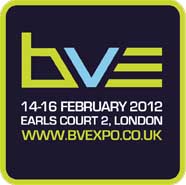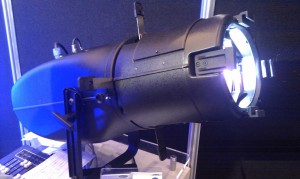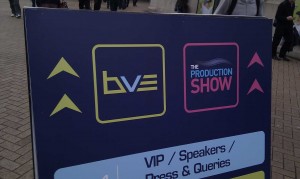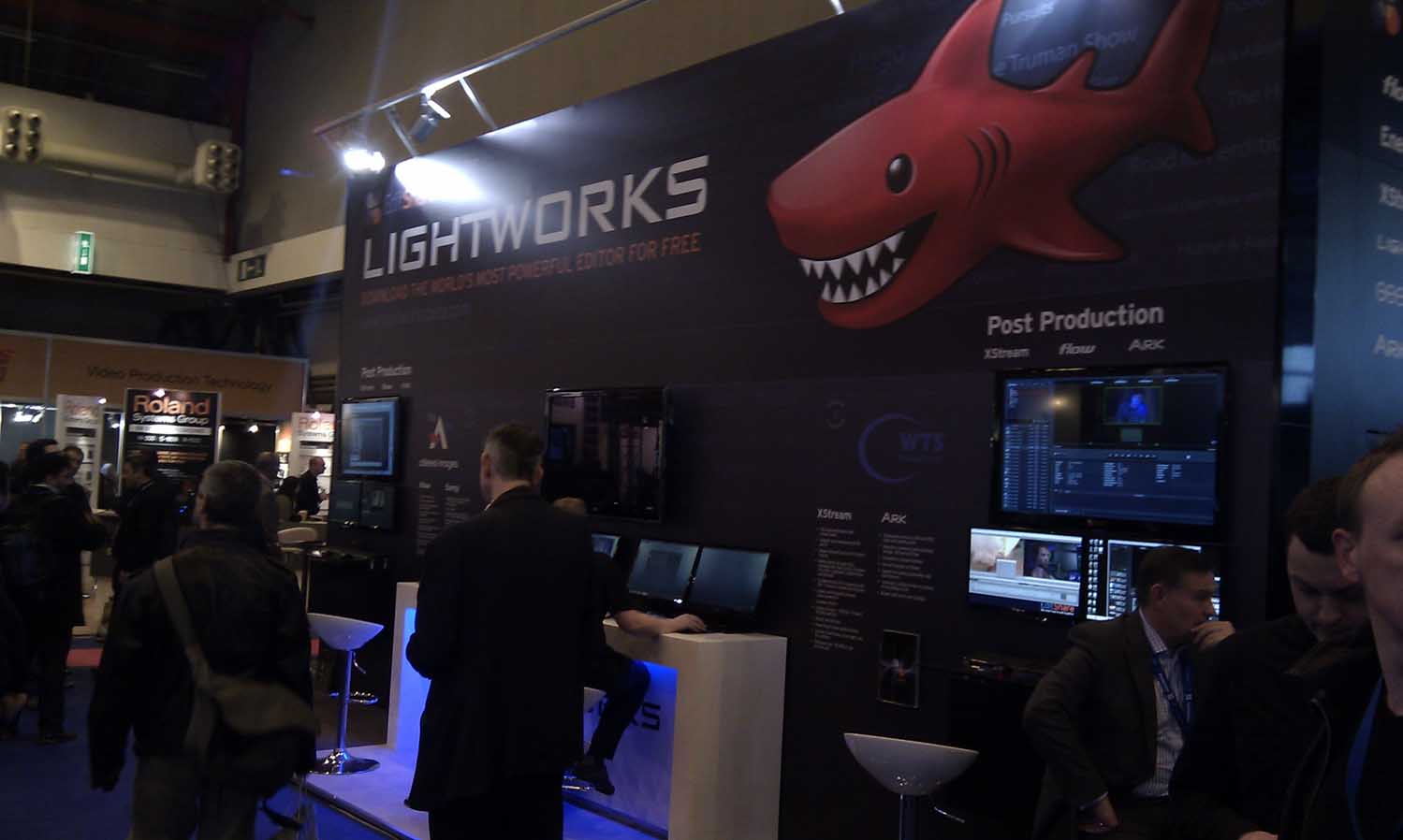 Apparently, 3D is still a “revolution.” That’s according to the Broadcast Video Expo in London this week, where the 3D Revolution Theatre hosted everyone from the BBC and Framestore down. I’m not sure it’s really necessary to talk up 3D any more than has already been done, and even Framestore admitted that the phase of absolutely massive hype for the technique may now be over. While it seems that every single feature that the company worked on in 2010 and 2011 either started out or ended up in 3D, that’s not the case for 2012. This is a fact which provides at least some comfort to people like me who associate stereoscopic 3D with the sensation of having a rusty tent peg driven firmly into each temple. Oh yes, point that long, pointy object at the camera. Point it!
Apparently, 3D is still a “revolution.” That’s according to the Broadcast Video Expo in London this week, where the 3D Revolution Theatre hosted everyone from the BBC and Framestore down. I’m not sure it’s really necessary to talk up 3D any more than has already been done, and even Framestore admitted that the phase of absolutely massive hype for the technique may now be over. While it seems that every single feature that the company worked on in 2010 and 2011 either started out or ended up in 3D, that’s not the case for 2012. This is a fact which provides at least some comfort to people like me who associate stereoscopic 3D with the sensation of having a rusty tent peg driven firmly into each temple. Oh yes, point that long, pointy object at the camera. Point it!
This turned out to be scant relief as the BBC announced its intention to broadcast at least some of the 2012 Olympics later this year in 3D on its HD channel. This means that, as someone who lives about 30 miles from the site, I now have the opportunity to experience the games as a literal as well as a figurative headache.
Hurrying gratefully away from the 3D exhibits and the possibility of migraine, it’s refreshing to see that while there’s still a lot of LED lighting around, the general standard of it seems to have come up a little. A year or two ago, every third booth at any industry trade fair would be crammed with hastily-produced printed circuit boards smothered with LEDs, and while that’s still the case to some extent there is now some actual engineering being applied to some of these things. Arri is no longer the only manufacturer to have an LED lighting device that has the ability to observe and calibrate its own output with tristimulus optical sensors, something I’m convinced will become essential as these products age.

Coemar’s LED Leko (£1,300), a 90W device and therefore equivalent to four or five times that of tungsten, is of course nicely built and from a recognizable name, but its output looks positively anemic compared to Prism’s much more powerful device. That said, it is considerably smaller; the Prism RevEAL is 33 inches long and weighs 35 pounds, making it a bit of a beast, although – wow – that’s a lot of output for a solid state light!
 Of interest to DSLR people will be MTF’s new Canon lens mount adapter, which provides control of an EOS lens’s iris and image stabilization functions while mounted to a non-Canon camera. It is a simple black box with a control knob and a cable to the lens mount, and allows the aperture to be adjusted in one-eighth stop increments.
Of interest to DSLR people will be MTF’s new Canon lens mount adapter, which provides control of an EOS lens’s iris and image stabilization functions while mounted to a non-Canon camera. It is a simple black box with a control knob and a cable to the lens mount, and allows the aperture to be adjusted in one-eighth stop increments.
This is an impressive innovation because Canon is infamously tight-lipped about the electronic protocol used to control EF lenses. There have been reverse-engineering efforts in the past, notably by Sigma (who built compatible lenses) and Berger Engineering, who made EF lens controllers for the machine vision industry and have for some time been promising one for film and television people. Because these efforts have been based entirely on observation and analysis of how the lenses and cameras Canon sell actually behave, they always carry the risk that future updates to the protocol will cause compatibility problems. Sigma solved this by providing for the lenses to receive software updates should a future camera prove to be incompatible. MTF, which only needs to control lenses and not talk to cameras, have it slightly easier, but they have also provided for a simple return-to-base update procedure for the lens controller should a problem occur. Hopefully in future they’ll start using those readily-available microcontrollers which have built in USB provision, making field updates possible.
The most-asked question about this I’m sure will be about focus control, and the simple answer is that it isn’t very practical for an external electronic device to provide follow-focus functionality on EF lenses, for two main reasons. The first reason is that the majority of EF glass uses rather coarse mechanics to control focus. While they are clearly capable of fine resolution, they don’t provide for a smooth motion characteristic when moving between those fine points of focus – simply put, it looks a mess because the servos aren’t smooth enough. The main issue, though, is that the protocol simply does not encode absolute focus distance. It encodes “farther” and “nearer,” but there is no one-to-one relationship between the focus position reported by the lens and the actual position of the lens elements.
So, there is unlikely ever to be a follow focus controller for EF lenses – or at least, not a good one that works well with non L-series glass. What MTF have done, though, is to solve the aperture problem for people who wish to use EF lenses on non-Canon cameras. MTF’s lens controller costs £995, including one of the three available lens mounts, currently Sony E, Sony F3, or Micro 4/3.
On the postproduction side, Editshare is only a couple of months from releasing the new, improved version of Lightworks. People who’ve been involved in the industry since the ’90s will remember a time when the two main ways of editing on a computer were Avid and Lightworks, but for various reasons Lightworks fell to some extent by the wayside. It’s now been thoroughly revamped and huge amounts of work have been done, but there are two really interesting things about it: first, Editshare is intending a subscription-based community membership, (including access to professional codecs), at the extremely modest price of £40/year, and second, there’s talk of a version for the Linux operating system. I’m no great fan of open source software, frankly because it doesn’t often work very well and has a terrible tendency to overlook the needs of real-world users. So far it has utterly failed to provide a usable nonlinear editor for Linux and it’s therefore no surprise that a commercial development effort like Lightworks had to step in. The real news, then, is that there may soon actually be a competent NLE for Linux, which there never has been to date, and at a price that offers very little barrier to entry for almost anyone.
Let’s wrap up with a few firsts: If you were at NAB last year, the F65 will now seem like news that’s almost a year old, but even so BVE 2012 marks the first UK exhibition of the camera. Similarly, it’s the first time we’ve seen JVC’s new 4K camera, about which I wrote recently, as well as the Canon C300. As last year, then, what we see becoming available at BVE is actually what we hear talked about in Vegas and in a glass box in Amsterdam. Given that NAB is now only a month or two away, it’ll be interesting to see which new toys will be put into that cycle this time round.






